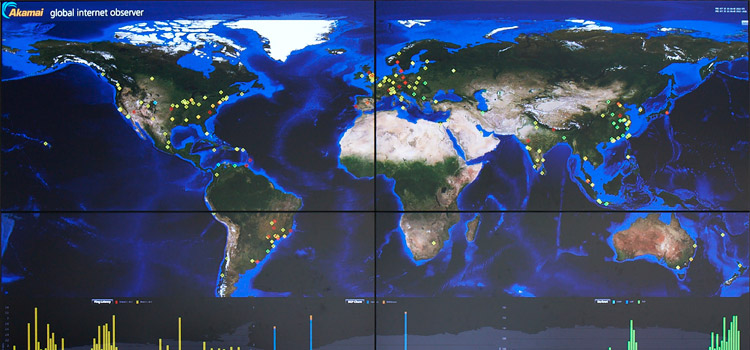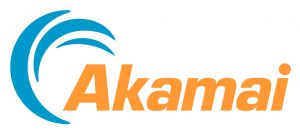Evolution of CDN services and OTT´s, a vision from Akamai.
An interview with Virgilio Sanz, Senior Solutions Engineer at Akamai Technologies.

How does Akamai see the future of the Media environment?
Our CEO said that we are at the beginning of a big change, if we focus on analyzing the consumption of live video on the Internet, a premium event with a large audience tends to reach a figure that is around tens or hundreds of thousands. In some specific cases, especially in some sporting events such as a top-level football match, it has been possible to reach a million or two million users. However, the same event watched by traditional television measures its viewers in millions. Therefore, there is still much to be done. Reaching the same audience level on the Internet is not only about the acceptance of this way of consuming content by users, it is also related to the technology that makes this possible. The fact is that the internet is not really intended for video, its structure has more to do with other forms of communication such as e-mail. There are many things that are happening and will change everything in the upcoming years.
What can architectures like P2P bring to all this change?
P2P is a well known protocol that brings many advantages. It has a bad reputation because it has been widely used in the distribution of pirated content, and this has been so because it does not need the content to be hosted on servers for distribution, but it is dispersed among different pairs that communicate with each other. It is a very suitable technology to make video live in an OTT environment. That´s why OTTs are structured as video clubs, so there will never be many people consuming the same content, while one user is in the 5th minute a movie, another is in the 20th minute of a series. And this is different from having many people watching the same content in real-time. It’s not just about the video being transported in high quality, it’s about this happening as quickly as possible so there’s no latency, and that’s not easy to achieve. At Akamai, we are putting a lot of effort into resolving this issue and we are very close to being able to guarantee a delay similar to that of a satellite or DTT, the complexity is in using networks without getting saturated so that the video can flow normally. According to our CEO, in the next two years we are going to witness the expansion of OTTs, which are going to stop being just VOD platforms and also offer linear channels, they are going to become much more complete platforms.
Will they also offer sports content?
Probably, although in this environment more things needs to be taken into account. There are many times that people in the video environment put all their effort and knowledge to make the video flow, but they don’t apply as much time and knowledge to the web that is in charge of managing it, and when users want to buy the game or event, the gateway falls. This is a recurrent occurrence and needs to be seen as a whole. If we take a short look, we see that there is a lot of evolution pending for the next few years, there are other markets where all the fashionable concepts such as Big Data, IoT, VR, etc. are like a bottle of champagne because many of them are marketing phenomena. But that doesn’t happen so much in the Media sector, here the evolution is constant but slower, and that’s a great advantage because it allows the operational and business models to settle much better.
And this is something that also affects the entire value chain.
Exactly, it affects the entire value chain and that’s why these changes are so slow. If we take into account everything that happens since a camera captures an image, we realize that there are many processes through which a content passes until it is consumed by a viewer, and each of them has its particularities. In addition, we will have many different devices at the end and each content will find its own. There will not be a winner above the rest, but it will depend on what you want to consume, with whom you want to consume and when. It’s not the same if a person wants to see something alone in bed, where a smartphone or tablet is the ideal device, as sharing a football game with friends. What is clear is that more and more people want to decide what they see. That’s why VOD keeps growing year after year and will continue to do so, we want to choose what we see above all else.
Telecoms operators are also joining this trend to round off their Internet offerings…
Exactly, there’s actually a “war” going on over the remote control. When an operator enters a home with its broadband and television offer, the remote control becomes theirs, so that they control a large part of the audio-visual consumption in that place. The weapon that the traditional TV channels in Europe have to fight against this is probably the HbbTV, with which they could try to recover control by offering additional tools. To date, HbbTV has been used by traditional channels to generate VOD with their own content, such as an OTT but through television. This is because they are obliged to have some application with this technology when they are awarded a license, but they are not taking advantage of the real potential of this technology. The red button enables a layer of interactivity on the TV that doesn’t have to be invasive, it can enable additional applications but you have to bet on them and develop them. Offer, for example, additional information about the contents offered, e-marketing, statistics, etc.
Are televisions understanding the change brought about by the Internet?
I’ve been working in media for a long time and not just on video, I’ve worked in traditional newspapers, online print media, a big TV and now Akamai, so I have a good view of what’s happened and what’s happening now. In my opinion, television sets are at the same point in time as newspapers were 10 years ago. What they are doing is trying to maintain their current position in the market, although that is not easy. There is less audience on the internet today, by far, so that advertising is sold cheaper and does not compensate them. But you have to consider what would happen if they had the same audience or even more than through their traditional channel, then the scenario would be different. They must bet on it and work hard to achieve it.
How can Akamai help with that?
There are things you can do from a CDN environment like Akamai. The transmission costs of a traditional television are fixed, that is to say, you pay the same for an audience of 100,000 people as for another one of 50,000,000, and that is something that does not happen on the Internet today, the cost of the service goes parallel to the level of audience you have, and that is something we have to contemplate in another way. Because a media is not an E-Commerce, i. e. more traffic does not necessarily mean more sales, it is another type of business. In fact, there is one peculiarity: if a programme broadcast over the Internet has a much larger audience than you thought, the operational costs of broadcasting will increase a lot. That’s why we at Akamai are investigating how to offer CDN flat rate service focused primarily on live events. For this type of approach, P2P is a great ally that also works best the more audience there is. The downside of peer-to-peer is that for live video it means generating a lot of latency, because you have to find in the different pairs the content you need. We’ve tested live football matches, with a lot of recurring users, and it looks great, but with latencies that go up to three minutes. This is where we are focusing our research, because it is not the same only P2P as the fact that there is a CDN behind it, helping everything go better, providing the necessary blocks to complete the data and the pairs that are being collected. That’s where the complication is.
How will consumption in OTT evolve?
In the specific case of OTTs we can see that the series are successful but there is not so much consumption of films however. Both Netflix and HBO, for example, are platforms that are very successful thanks to the series. This is because of a pure and hard marketing theme. Movies really do have promotion when they are in billboard, the series have a longer life though. When a movie is no longer on the screen, it seems that it disappears and falls into oblivion, so the movie that is in the mind of the user is the one that has just been released and is on the screen, which will not be on the Internet until 4 months later. This is why the VOD grows mainly on the basis of series. Platforms actually have a lot more content than that but it’s not always easy to find. A revolution similar to the one that music has already passed must occur. Consumption models that really make everything sustainable. Spotify for example, where you have everything from very old music to the latest album of a current band. Many times there are films that are not on any platform because you don’t know if you are going to make money with it, for example old films, but the truth is that they have their own audience.
Akamai is the global leader in Content Delivery Network (CDN) services, making the Internet fast, reliable and secure for its customers. The company’s advanced web performance, mobile performance, cloud security and media delivery solutions are revolutionizing how businesses optimize consumer, enterprise and entertainment experiences for any device, anywhere.
 Epic Labs, proud member of the DASH Industry Forum and the Digital Production Partnership, is a software engineering center that helps companies to innovate in Media, offering advanced video solutions and several collaboration proposals in digital transformation.
Epic Labs, proud member of the DASH Industry Forum and the Digital Production Partnership, is a software engineering center that helps companies to innovate in Media, offering advanced video solutions and several collaboration proposals in digital transformation.






